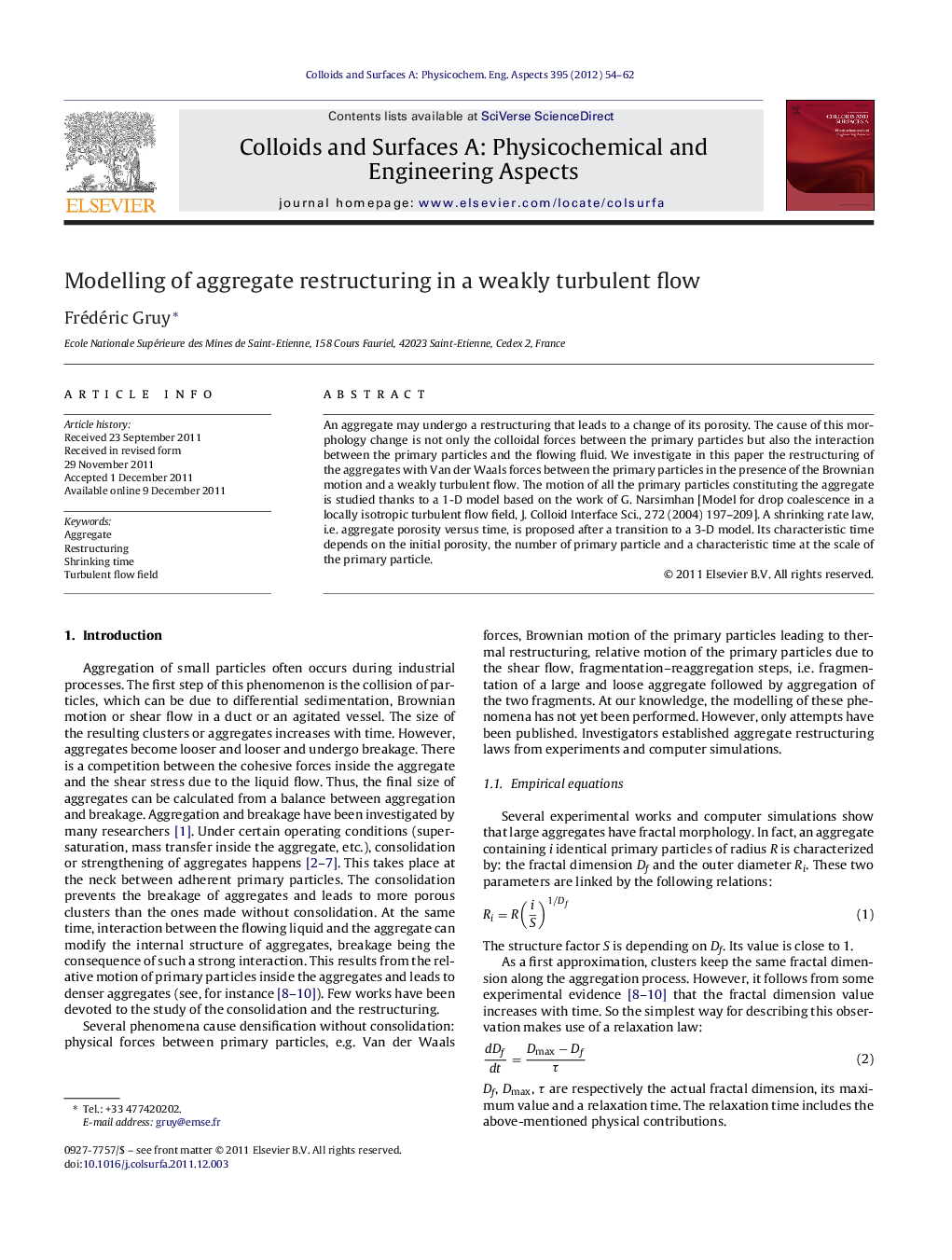| Article ID | Journal | Published Year | Pages | File Type |
|---|---|---|---|---|
| 594425 | Colloids and Surfaces A: Physicochemical and Engineering Aspects | 2012 | 9 Pages |
An aggregate may undergo a restructuring that leads to a change of its porosity. The cause of this morphology change is not only the colloidal forces between the primary particles but also the interaction between the primary particles and the flowing fluid. We investigate in this paper the restructuring of the aggregates with Van der Waals forces between the primary particles in the presence of the Brownian motion and a weakly turbulent flow. The motion of all the primary particles constituting the aggregate is studied thanks to a 1-D model based on the work of G. Narsimhan [Model for drop coalescence in a locally isotropic turbulent flow field, J. Colloid Interface Sci., 272 (2004) 197–209]. A shrinking rate law, i.e. aggregate porosity versus time, is proposed after a transition to a 3-D model. Its characteristic time depends on the initial porosity, the number of primary particle and a characteristic time at the scale of the primary particle.
Graphical abstractFigure optionsDownload full-size imageDownload as PowerPoint slideHighlights► Mono-dimensional model for aggregate restructuring. ► Dynamics of the aggregate restructuring in motionless fluid or in turbulent flow. ► Calculation of the restructuring law as a simple function: aggregate porosity versus time.
